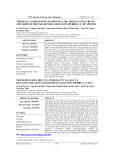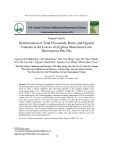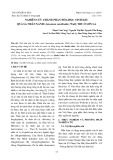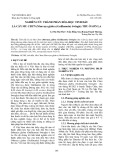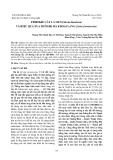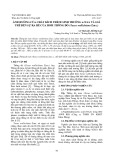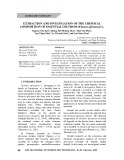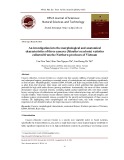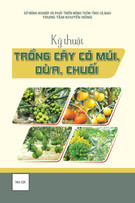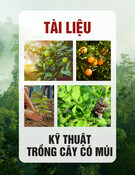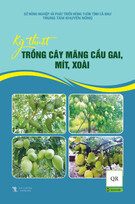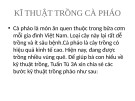
Vietnam Journal
of Agricultural
Sciences
ISSN 2588-1299
VJAS 2024; 7(1): 2040-2051
https://doi.org/10.31817/vjas.2024.7.1.03
https://vjas.vnua.edu.vn/
2040
Received: June 19, 2023
Accepted: March 22, 2024
Correspondence to
ltnha.cntp@vnua.edu.vn
ORCID
Lai Thi Ngoc Ha
https://orcid.org/0000-0003-1020-
3752
Exploitation of Catechin Extract from Pruned
Tea Leaves as a Promising Food
Preservative Against Lipid Oxidation
Lai Thi Ngoc Ha*, Tran Thi Hoai, Hoang Lan Phuong & Nguyen
Van Lam
Faculty of Food Science and Technology, Vietnam National University of Agriculture,
Hanoi 131000, Vietnam
Abstract
In Vietnam, a tea-producing country, the tea buds and top three leaves
are normally used for tea production while older leaves are pruned
and discarded as agricultural waste in the winter. The present study
aimed to exploit catechins from pruned tea leaves and use them as
natural antioxidants for applications in the food industry. Catechins
were analyzed using the guideline of ISO 14502-2-2005 by HPLC-
MWD. The contents of catechins in pruned tea leaves of ten popular
tea varieties were relatively high, ranging from 65.57 to 136.88 mg/g
dry weight. The optimized conditions for catechin extraction from
Phuc Van Tien pruned tea leaves (one of the varieties with a high
catechin content) were found using response surface methodology as
follows: a liquid-to-solid ratio of 21.6/1 at 70oC for 31 minutes. The
catechin-rich extract powder was added to sesame oil to inhibit lipid
oxidation. During oil accelerated oxidation at 60oC, the catechin-rich
extract powder inhibited the increase of the peroxide value compared
with the negative and positive controls (no preservative and added
tert-butylhydroquinone, respectively). Significant positive
correlations between the decrease of catechin content and the
inhibition of peroxide formation (r = 0.91, 0.94, 0.95, 0.97, and 0.96
for catechin, epigallocatechin gallate, epigallocatechin, epicatechin
gallate, and epicatechin, respectively, P <0.05) proved that the
inhibition of peroxide formation in the sesame oil was essentially due
to the antioxidant capacity of the catechins in the pruned tea leaf
extract. Catechin extracts from pruned tea leaves are potential sources
of natural antioxidants for oil preservation.
Keywords
Phenolic compounds, catechin extraction, response surface
methodology, lipid oxidation
Introduction
Tea (Camellia sinensis) is one of the most popularly consumed
beverages in the world (Prasanth et al., 2019). Tea leaves contain a






